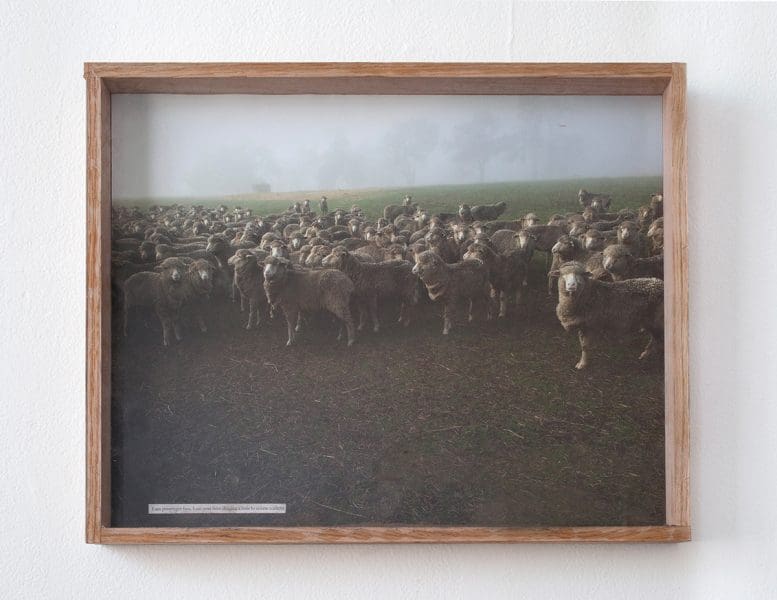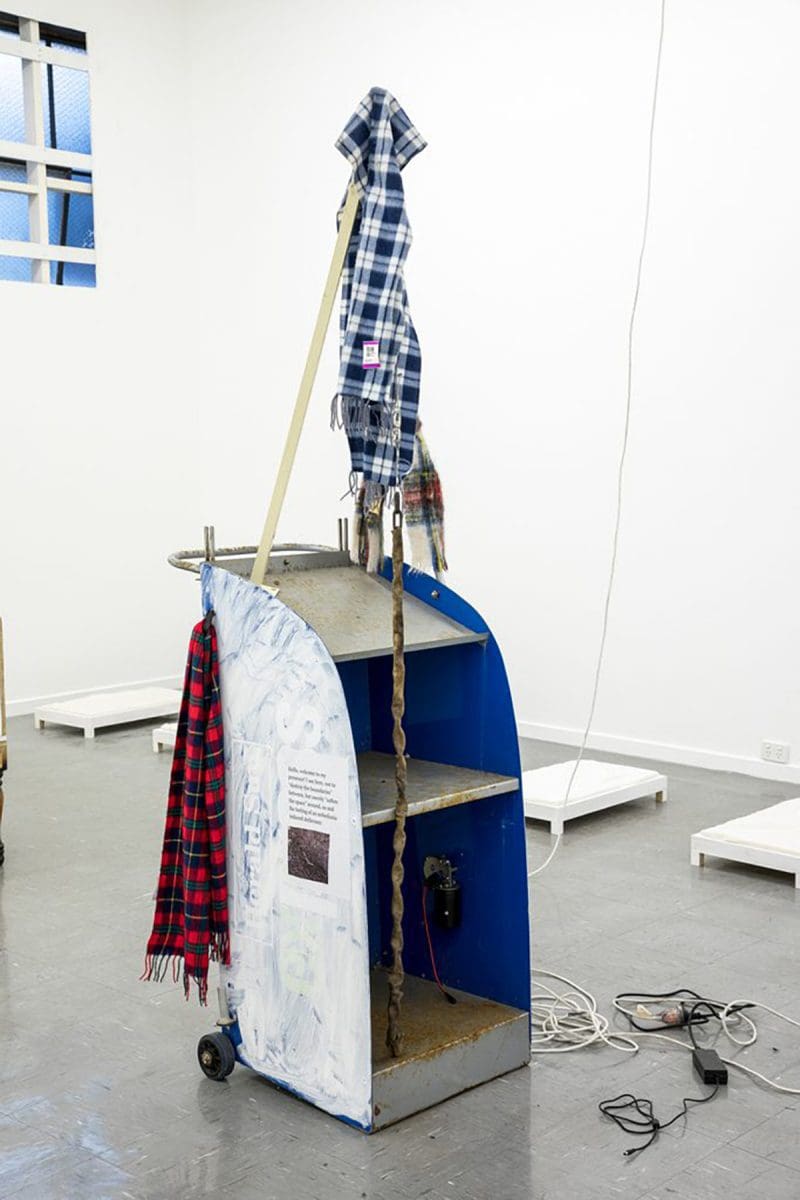
Making Space at the Table
NAP Contemporary’s group show, The Elephant Table, platforms six artists and voices—creating chaos, connection and conversation.





George Egerton-Warburton’s concurrent solo exhibitions at Heide Museum of Modern Art and Sutton Gallery mark a homecoming of sorts for this young artist. Egerton-Warburton, who was born and raised in Western Australia before moving to Melbourne, has been living in Los Angeles where he went to study at the University of Southern California. Barnaby Smith spoke to Egerton-Warburton about critiquing late capitalism, the nature of work, labour, productivity and inequality, and approaching cultural difference with a dry, somewhat absurdist, sense of humour.
Barnaby Smith: When the visitor first walks into your Heide exhibition, what will they see?
George Egerton-Warburton:The exhibition contains paintings, kinetic sculpture, ready-mades, audio and collage. Things always change from the studio to the gallery in quite unpredictable ways, but I want to achieve an environment that operates as a rehabilitative space for confusion; not to cure confusion, but to enable it. Rihanna’s ‘We found love’ has been slowed down to a pace that feels… intoxicated.
BS: The exhibition has themes of inequality, the individual’s place amid power structures, and the individual’s social purpose. Which theorists or writers have had a bearing on your thinking?
GEW: I am thinking mostly of the gentrification of our desires and paranoia surrounding my own control over my desires – and the idea of being ‘under the influence’ physically and culturally. I read and write a lot, but more importantly I have conversations with peers such as the Heide curator Brooke Babington, and Pip Wallis, Nicholas Mangan, Helen Johnson, Alice Heyward, Alex Vivian, Zac Segbedzi, Matthew Linde, and Hamishi Farah. I have been attempting to live and learn among living bodies.
BS: When and how did the idea of labour and working life enter as a central theme in your work? What role did growing up on a farm play?
GEW: There are some formative experiences of labour that I always return to in my practice, such as my first job as a garbage man. It came as I left school and was discovering partying and sexuality. Years later I was walking down the street and I was hit by a wave of that pungent smell that explodes out the back of the garbage truck as it compacts the trash.
Reflecting on this, I thought about how important and defining the first ‘job’ was in society, how good it felt to serve a purpose. I felt a little betrayed by my senses – that I had been conditioned by a working wage to enjoy the smell of shit. With regards to growing up on a farm, it puts the awkward moral balance in nature in stark relief – by giving life to one thing, you take it away from something else.
BS: One of the most striking works at Heide must be Truffle Hunting, 2017, which utilises real dog faeces…
GEW: The scent of truffles closely resembles the pheromones found in male pig saliva, which makes female pigs adept at seeking them out. So these images of men corralling pigs around with sticks, leashes and spades to look for luxury food take on a certain pathos. The pigs are looking for romance.
I put dogshit in the frames because it looks like truffles and it reflects on my own experience of enjoying the smell after being rewarded with remuneration and a sense of purpose for picking it up.
BS: Can you describe your thinking behind your ongoing series, Seven Beds, also at Heide?
GEW: I started making one small bed per day when I studied in Los Angeles. I was struggling with the cultural difference – there was pressure to produce a lot. I was thinking about seriality for the first time, but also the works of artists such as Tehching Hsieh.
Frances Stark was also having a moment in Los Angeles and everyone was rereading Bartleby, the Scrivener [Herman Melville, 1853-1856]. It struck me as strange that the politics of refusal were in vogue, especially in the context of the MFA industrial-complex and accelerationist platforms like e-flux.
I had also just read Two Serious Ladies [Jane Bowles, 1943], in which the protagonist experiences self-actualisation while in bed, not participating in other activities.
I wanted to find a way of encapsulating the sense I had that the best ideas were contradictions. The beds, which I made on days when I had nothing else to do, were an attempt at expressing this recess, or time spent doing nothing, when I might have otherwise become depressed. That work becomes a cure for depression is in itself a somewhat depressing idea.
BS: The humour that runs through your work has been widely identified. How important is it to achieve a balance between irony and satire and a more serious sociological message?
GEW: It’s very hard to make Americans laugh when you’re critiquing capitalism.
BS: These works have also been shown in exhibitions in the US. How, if at all, do you anticipate Australian audiences responding differently to those in America?
GEW: I used to be very concerned with how audiences responded to my work – it was stultifying. I’m genuinely curious to see though – I’m grateful for any engagement.
BS: What role does language play in your art?
GEW: I initially wanted the exhibition at Heide to be titled with just the symbol for a comma, however it was felt that it would look like a typo or be confusing. [Coma at Sutton is a deliberate misspelling.] I have always perceived confusion to be a rehabilitative state. I am not interested in being a stakeholder for legibility.
These ideas have existed in previous exhibitions such as English at Chateau Shatto in Los Angeles in 2017, where I combined texts with motors to explore the relationship between legibility and power.
BS: You are also an active writer about art. How do you approach your writing in terms of its function and philosophy?
GEW: When I write about other artists I see it as an opportunity to change gears, to express something in a more direct way than I do in my studio practice. I also feel that it’s an important part of contributing to a community that I am a part of.
I feel very lucky to be a part of an ongoing conversation with peers.
George Egerton-Warburton
Heide Museum of Modern Art
29 June – 20 October
Coma
George Egerton Warburton
Sutton Gallery
29 June – 27 July